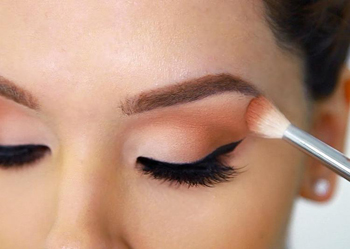New Delhi, Jul 13: Meibomian gland dysfunction -- also known as dry eye syndrome -- is on the rise among women due to excess make-up of the eyes. Though not taken seriously, the condition leads to blepharitis, extreme blurred vision, said doctors.
Latest medical cases revealed that though MGD until now was seen due to ageing, now the trend has changed and it is occurring among young women as well.
"The changing trend of make-ups causing MGD is dangerous. Eyeliner and other make-up usually clog the meibomian glands leading to formation of painless lumps in the eyelids hence obstructing the vision," said Mahipal Sachdev, Director, Centre for Sight, a chain of eye centres in North India.
Elaborating on the condition, Sachadev, who often sees young women with MGD says that the meibomian produce oils that prevent the tears from evaporating quickly. Whenever the glands do not function properly, the blockage in the gland restricts it from producing oil.
"The oil may sometimes thicken leading to cause benign lumps in the eyelids known as chalazion. MGD is the most known and leading cause of dry eye syndrome, blepharitis and in extreme cases loss of vision," said Sachdev.
Medical Sciences says that there are around 40 such glands that produce oil that flows out of the eyes as tears to keep the eyes moistened. Thickening of this oil restricts its flow causing accumulation and blockage, forming a lump in the eyelid. A blocked oil gland causes this condition of red swollen eyelids.
"Around 40 per cent of the women with high usage of eye make-up products tend to get affected with oil gland blockages. Parabens and yellow wax used in mascara and eyeliners to stiffen them to make it waterproof are the same chemicals that also clog the oil glands leading to MGD, chalazion, dry eye syndrome and blepharitis," Parul Sony, senior consultant and director of Gurgram's Complete Eye Care.
Stating that anti-ageing eye creams contain retinoids that has also been linked to thickening and degeneration, Sony said that such make-ups kill the blood cells in the meibomian gland ducts.
A study by Canada's University of Waterloo said people who apply eyeliner on the inner eyelid run the risk of contaminating the eye and causing vision trouble.





Comments
Add new comment